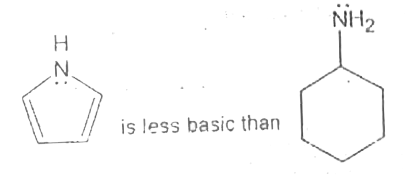Statement 1:Buta-1,3,-diene is the monomer of Gutta Percha.
Statement 2:Gutta Percha is formed through cationic addition polymerisation.
Statement 1 is true ,statement 2is true,statement2is the correct explanation of statement1
Statement 1 is true ,statement 2is true,statement2is not the correct explanation of statement1
Statement 1 is true ,statement 2is false
Statement 1 is false,statement 2is true
The correct Answer is:D
To analyze the given statements regarding Gutta Percha and its monomer, we can break down the solution into clear steps:
Step 1: Identify the Monomer of Gutta Percha
- Explanation: The first statement claims that buta-1,3-diene is the monomer of Gutta Percha. However, the actual monomer for Gutta Percha is isoprene, which is chemically known as 2-methylbuta-1,3-diene.
- Conclusion: Therefore, Statement 1 is false.
Step 2: Understand the Polymerization Process
- Explanation: The second statement claims that Gutta Percha is formed through cationic addition polymerization. In cationic polymerization, a cation initiates the polymerization process, and isoprene, which has an electron-donating methyl group, can undergo this type of polymerization.
- Conclusion: Thus, Statement 2 is true.
Step 3: Summarize the Results
- Final Conclusion:
- Statement 1: False (the monomer is isoprene, not buta-1,3-diene).
- Statement 2: True (Gutta Percha is formed through cationic addition polymerization).
The overall answer is that Statement 1 is false, and Statement 2 is true.
Final Answer
- Option D: Statement 1 is false, Statement 2 is true.
---
- Explanation: The first statement claims that buta-1,3-diene is the monomer of Gutta Percha. However, the actual monomer for Gutta Percha is isoprene, which is chemically known as 2-methylbuta-1,3-diene.
- Conclusion: Therefore, Statement 1 is false.
- Explanation: The second statement claims that Gutta Percha is formed through cationic addition polymerization. In cationic polymerization, a cation initiates the polymerization process, and isoprene, which has an electron-donating methyl group, can undergo this type of polymerization.
- Conclusion: Thus, Statement 2 is true.
- Final Conclusion:
- Statement 1: False (the monomer is isoprene, not buta-1,3-diene).
- Statement 2: True (Gutta Percha is formed through cationic addition polymerization).
The overall answer is that Statement 1 is false, and Statement 2 is true.
- Option D: Statement 1 is false, Statement 2 is true.
Topper's Solved these Questions
Similar Questions
A:1,3-butadiene is the monomer for natural rubber.
R: Natural rubber is formed through anionic addition polymerisation.
View SolutionAssertion : 1,3− Butadiene is the monomer for natural rubber.
Reason : Natural rubber is formed though anionic addition polymerization.
View SolutionStatement-1:

Statement-2:
View SolutionStatement-I : Buta−1,3−diene is less stable than Penta−1,4−do,eme, ltbr> Because
Statement-II : Buta−1,3−diene has greater number of reasonating structures and delocallsed electron cloud.
View SolutionStatement-1:Reduction of But-2-yne of Na/liq. NH3 gives
trans-But-2-ene.
Statement-2: It is an example of 'anti' addition.
View SolutionStatement-1 : Polybutadiene is an example of chain growth polymer.
Statement-2 : In chain growth polymers, the reactive particles may be free radicals or ions (cations or anions) to which monomers get added by a chain reaction.
View SolutionStatement-1 : Polarisation is the distortion of the shape of an anion by adjacently placed cation.
and
Statement-2 : Maximum polarisation is brought by a cation of high charge .
View SolutionStatement-1: Benzene can decolourise Baeyer's reagent
Statement-2: CO2 can never be formed by reductive ozonolysis of hydrocarbons.
Statement-3: Acetylene forms musturd gas with sulphurmonochloride
View Solutionstatement I: Addition of Br2 to 1-butene gives two optical isomers.
statement II: The product contains one asymmetric carbon atoms.
View SolutionWhat is the monomer of natural rubber? What is the difference in the structures of natural rubber and gutta percha?
View Solution
